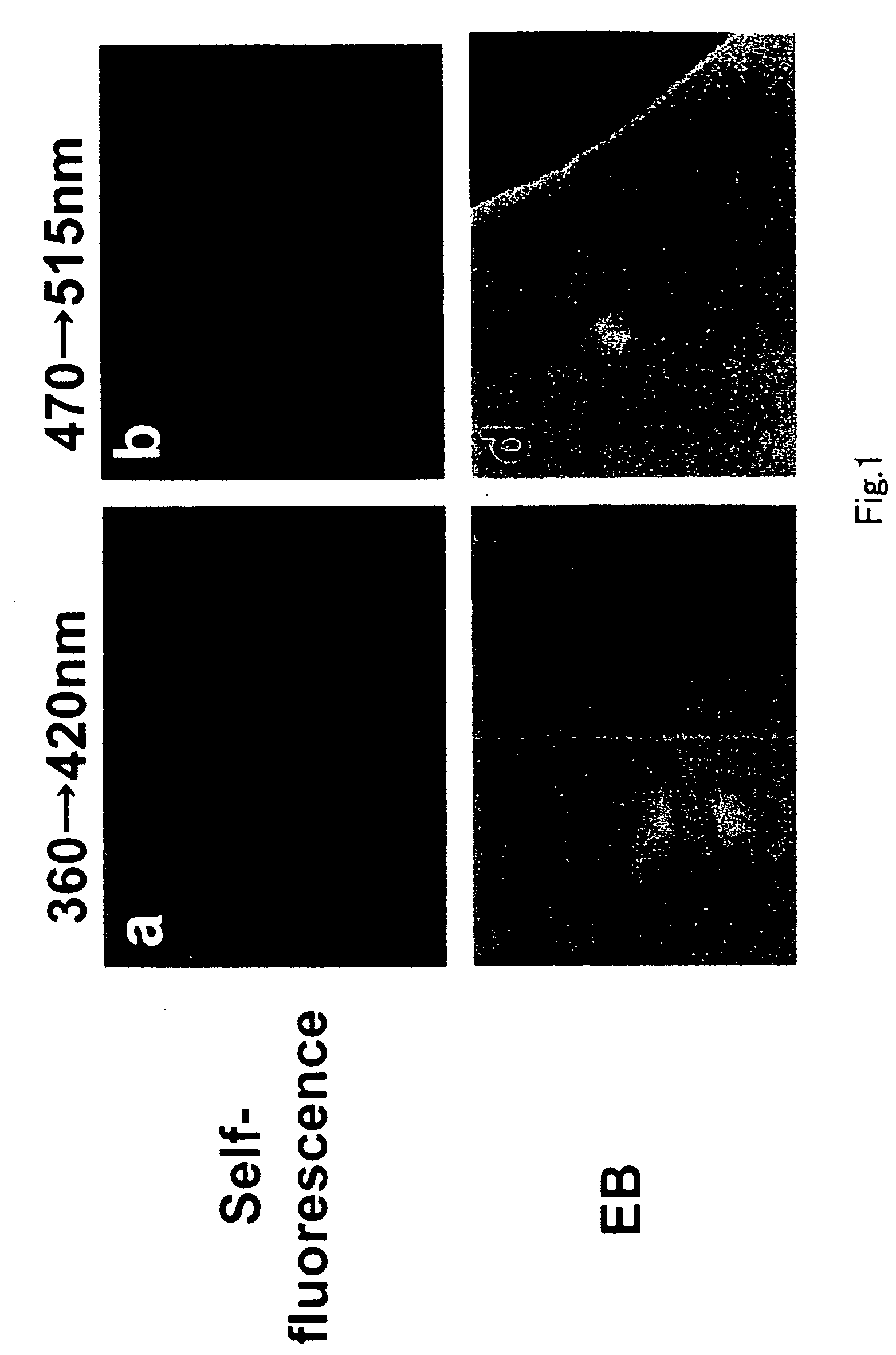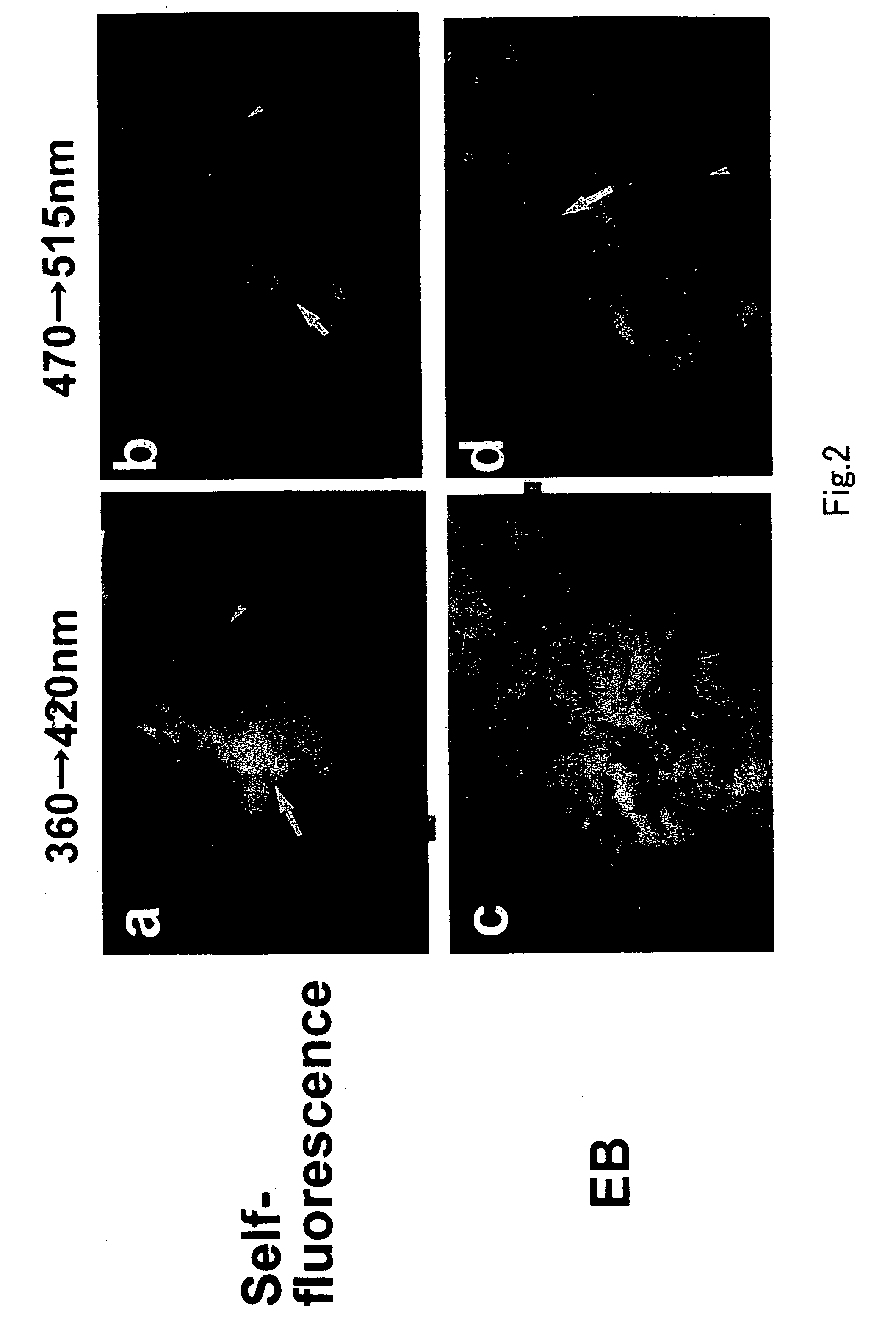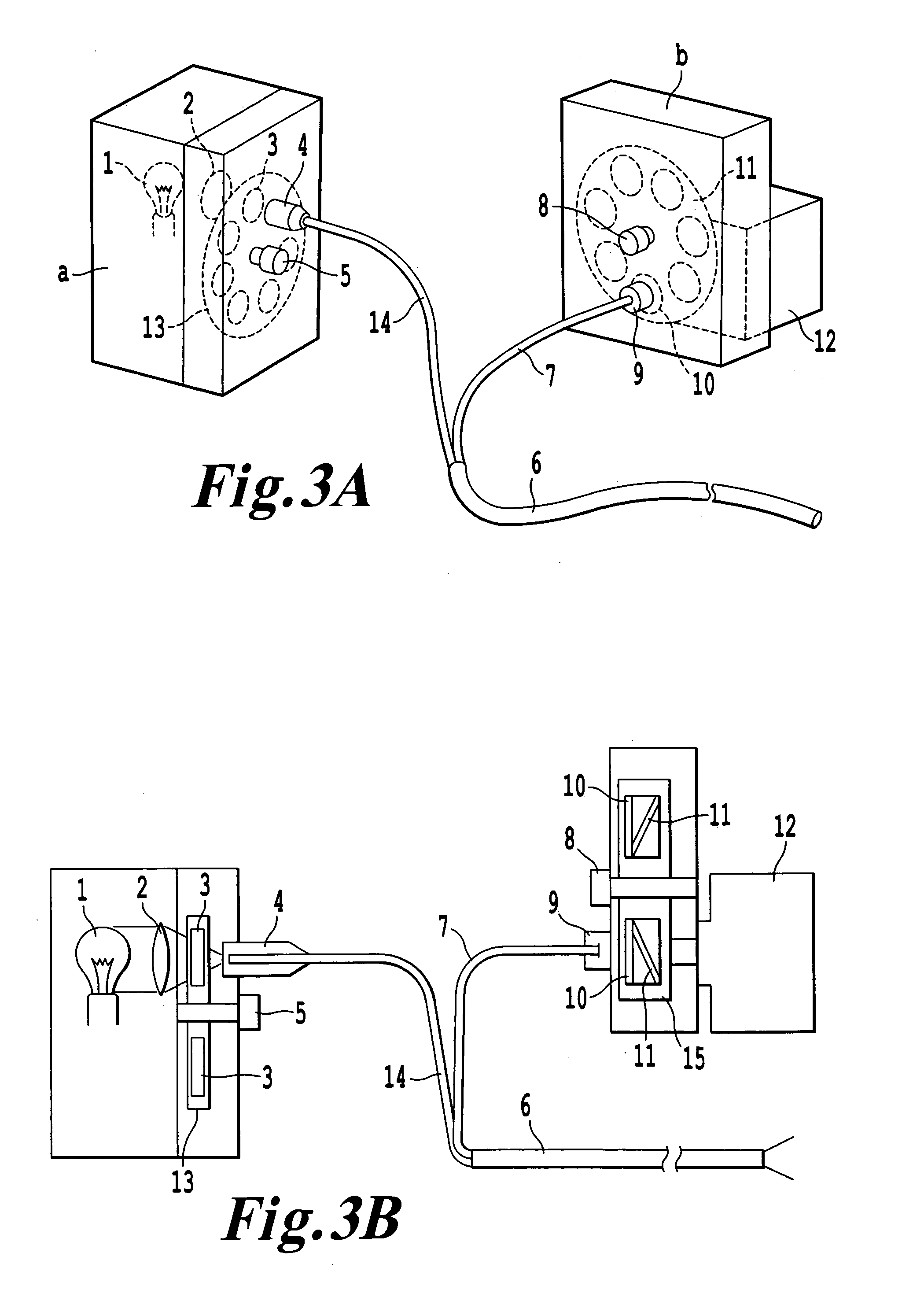Medicine for detecting lipid components in vivo and vascular endoscope
- Summary
- Abstract
- Description
- Claims
- Application Information
AI Technical Summary
Benefits of technology
Problems solved by technology
Method used
Image
Examples
example 1
[0048] Microscopic Examination of Fluorescences Characteristic of Major Substances Composing Atherosclerotic Plaques
[0049] Self-fluorescences and dye-evoked fluorescences of the major substances composing the atherosclerotic plaque were examined by fluorescent microscopy.
1) Materials and Methods
[0050] a) Commercially obtainable substances composing atherosclerotic plaques were added to one of the dyes and the evoked fluorescences were examined by fluorescent microscopy (Olympus). The substances used are as follows: oxidized low density lipoprotein (oxLDL; Biogenesis LTd, Kingston), low density lipoprotein (LDL; Carbochem Co, LaJolla), very low densitiy lipoprotein (VLDL; Athens Res & Tech, Athens), intermediate density lipoprotein (IDL; personally isolated), high density lipoprotein (HDL; Chemicon Int.), phosphatidylcholine (PC; Sigma Co, St. Louis), L(a)-lyso phosphatidylcholine (lyso PC; Sigma Co, St. Louis), apolipoprotein B100 (apoB 100; ICN Biomedicals, Ohio), Triglyceride ...
example 2
[0062] Scanning Microscopic Observation of Dye-evoked Fluorescences Characteristic of Lipid Components in the Atherosclerotic Plaques of Human Coronary Artery
1) Materials and Methods
[0063] Atherosclerotic plaques of coronary artery removed from human cadavers by permission of family was cut into 2×2 mm2 segments, dipped into 10−5 M dye solution for 5 min, and they were washed with saline to mounted on deck glass for fluorescent microscopic observation.
2) Results
[0064]FIG. 2 shows Evans blue-evoked color fluorescence of human coronary plaque. Before dye administration, the plaque exhibited white to yellow self-fluorescence (arrow in a) by exciting at 360 nm and emitting at 420 nm and yellow to orange fluorescence by exciting at 470 nm and emitting at 515 nm (arrow in b), indicating existence of calcium phosphate, free cholesterol and beta-Carotene. After Evans blue administration, violet fluorescence was evoked in the plaque (arrow in c) by exciting at 360 nm and emitting at 42...
example 3
[0066] Observation of Dye-evoked Fluorescence Characteristic of Lipid Components in Atherosclerotic Plaques of Human Coronary Artery by Color Fluorescent Image Angioscopy System
1) Materials and Methods
[0067] a)Color fluorescent image angioscopy system
[0068] The color fluorescent image angioscopy system is composed of a fiberscope with 200 quartz fibers for light guide and 7000 quartz fibers for image guide incorporated in a 5 F balloon guiding catheter, fluorescence exciting part, fluorescence emitting part, 3CCD color digital camera (C37780, Hamamatsu Photo, Co, Hamamatsu), DVD and monitor. The exciting part is composed of Xe—Hg lamp, lens, and 7 exciting filters imbedded in a rotating disk. The emitting part is composed of 7 emitting filters imbedded in a rotating disk (FIG. 3). The wavelength of the exciting and emitting filters is shown in Table IV. By changing filters by rotation of the disks, a wide range of fluorescent wavelength can be examined.
[0069] b) Perfusion circu...
PUM
 Login to View More
Login to View More Abstract
Description
Claims
Application Information
 Login to View More
Login to View More - R&D
- Intellectual Property
- Life Sciences
- Materials
- Tech Scout
- Unparalleled Data Quality
- Higher Quality Content
- 60% Fewer Hallucinations
Browse by: Latest US Patents, China's latest patents, Technical Efficacy Thesaurus, Application Domain, Technology Topic, Popular Technical Reports.
© 2025 PatSnap. All rights reserved.Legal|Privacy policy|Modern Slavery Act Transparency Statement|Sitemap|About US| Contact US: help@patsnap.com



